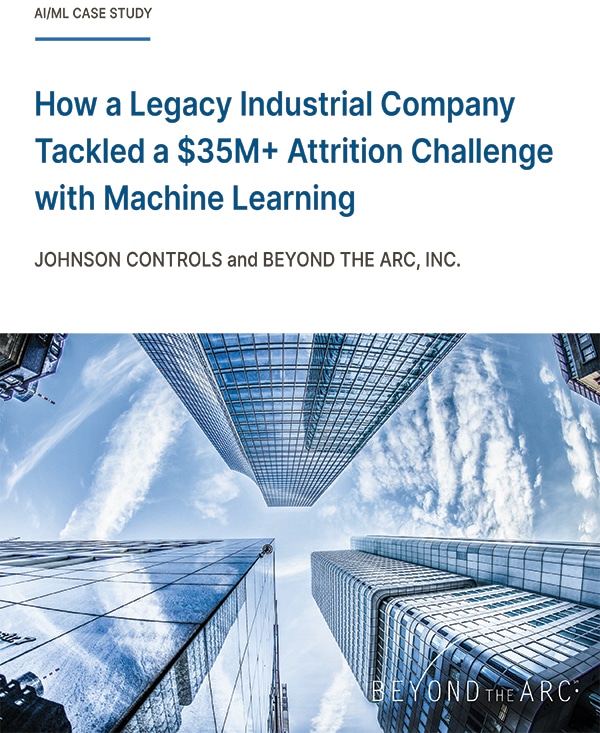
What are AI and predictive insights?
What if you could use data like a secret superpower to help you predict future outcomes? You could tap into the minds of customers, and as a result, make those customers happy. This is a bit of the promise of insight prediction.
AI is a field of computer science that includes tools that mimic human intelligence. Predictive analytics and machine learning are branches within AI that are used to build models predicting and describing behavior.
Armed with enterprise data sources and predictive analytics, you can connect with customers in a whole new way and, in turn, improve operations and maximize profit.
How does this look? One part of the equation is using the data to answer key business questions:
- What is the lifetime value of a customer that made a purchase for the first time today?
- Are there hidden factors that impact cost and margins?
- How do we reduce churn and retain the most valuable customers?
Where does all the data come from for insight prediction?
It can be pulled from more sources than you think, and the data you add will give you important insights into the customer experience.
- Interactions – email and chat transcripts, call center notes, web click-streams, and in-person dialogues
- Attitudes – opinions, preferences, needs, and desires gathered through survey results and social media
- Descriptions – attributes, characteristics, self-declared information, addresses and other location information, and demographics
- Existing business data – transactions, purchases, phone logs, store visits, web page visits, mobile interactions, response to past promotions, lifetime value, tenure with the company, payment history, and usage history
Unlock the power of your enterprise data
From uncovering customer pain points and operational risk, to creating highly nuanced customer segments for targeted marketing, predictive analytics takes your business intelligence to the next level:
- Predict which customers are most likely to respond to offers
- Predict which customers need an extra nudge to respond to offers
- Predict which customers are good prospects for add-on products or services
- Track customers at risk of attrition and discover likely reasons for leaving
- Identify risk of fraud
- Identify risk of default
AI and predictive insights in action
How are companies applying predictive analytics to increase business value?
Improving retention with enhanced customer service based on behavioral segmentation.
- A large mobile service provider wanted to reduce attrition by targeting which customers were likely to cancel service soon, so they could take preemptive action to retain their business. By developing predictive models based on specific behaviors for different people, they were able to craft offers that would likely appeal to certain segments. They fed this information into the call center, so service reps could provide specific offers to high-risk segments to improve customer satisfaction.
Reducing employee turnover and hiring for success using predictive insights.
- A leading financial institution used advanced analytics to increase the long-term effectiveness of hiring choices. They started by analyzing patterns in their HR data. They were able to identify which skills, experience, and behaviors were predictive of success on the job for frontline employees. They could use a similar approach to reduce employee attrition. They focused on finding solutions by analyzing a broad scope of data including hiring information, Voice of the Employee feedback, intranet browsing patterns, and more.
While traditional business intelligence reports on what’s happened in the past, predictive analytics gives you the power to create business impact on an individual level, and to do that for millions of individuals.
With a machine learning approach to insight prediction, you can develop reliable, repeatable models for predicting outcomes. In turn, this helps drive more profitable decision-making.
Johnson Controls is using AI to reduce churn and identify over $100M a year of protectable revenue

Johnson Controls had no usable data sets, no data science team or data engineers.
How could they rapidly build a global data team with new AI/ML capabilities to improve business outcomes on a major scale?
Is your company struggling with how to implement predictive analytics?
Last updated: February 05, 2024
Image source: Pixabay.com


